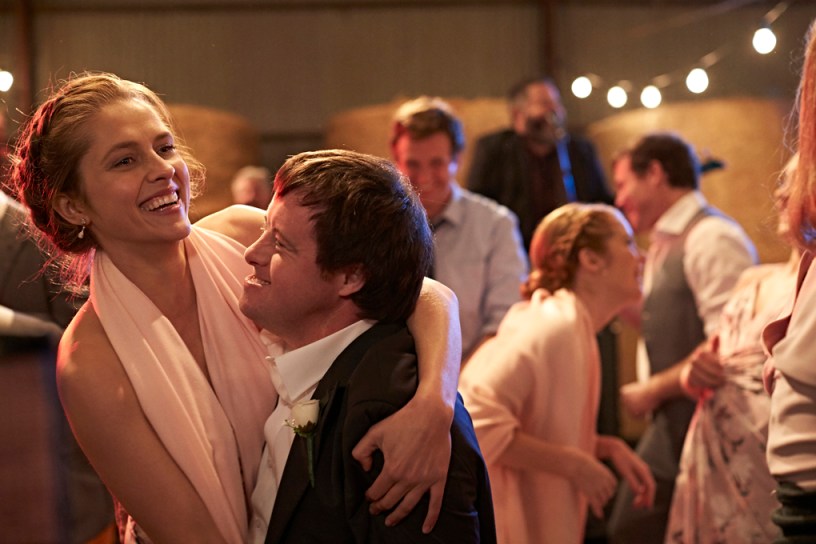‘Ride Like a Girl.’
Given the relentless competition from Netflix and other streaming services, Australian exhibitors and distributors can take heart from the 2019 box office total, which was the third highest ever.
The nationwide B.O. of $1.228 billion was down fractionally on 2018’s $1.245 billion and not far short of the 2016 industry record of $1.259 billion, according to the Motion Picture Distributors Association of Australia (MPDAA).
As IF reported, 59 Australian films and feature docs released in cinemas last year plus a few holdovers generated $40.2 million, compared with 2018’s $57.4 million.
The year’s Australian top-grosser was Rachel Griffiths’ Ride Like a Girl, which has raked in $11.7 million, one of nine titles which each grossed more than $1 million.
Will Gluck’s Peter Rabbit was the No. 1 local title in 2018 with $26.7 million, which alone would account for the year-on-year decline. Sony Pictures is due to launch Peter Rabbit 2: The Runaway in March, so that is virtually certain to be a big contributor to the 2020 revenues.
The Aussie releases’ market share was 3.3 per cent, down from the prior year’s 4.5 per cent. The MPDAA does not calculate ticket sales but based on an average price of $14.50, last year’s admissions would have been around 85 million, down from 89.8 million in 2018.
“The Australian screen industry performed solidly in 2019 with creators not only producing works that resonated with audiences but with the sector remaining incredibly resilient despite the upending of entertainment business models globally,” said Screen Australia CEO Graeme Mason.
“In part that is due to the bedrock of direct and indirect government funding that ensures Australian stories are told, but the bottom line is a film or series needs to be quality to attract the kind of solid viewership we’re seeing. To that end, our local creators are to be congratulated.”
Mason noted the long tail for some theatrical films and TV series, compared with the swift payday from streaming platforms and no further revenue, while online content creators often have to supplement their income from live theatre.
As a result, he said Screen Australia is looking to fund productions that are not only creatively exceptional but are crafted and financed for the new market conditions.
“We want to see very deliberate choices in budget, the use of Offsets, target audience, release strategy and international partners, with success measures that are realistic,” he said.
Screen Australia directly injected nearly $76 million into the screen sector in 2018/19, including more than $54 million in TV, film and documentary production funding which triggered over $360 million in activity. An additional $207.69 million was provided through the Producer Offset.
Disney’s Avengers: Endgame was the year’s biggest blockbuster, notching $84.1 million and smashing industry records for the opening day ($10.3 million) and opening weekend ($34.1 million).
Some 28 US and other international films accounted for 60 per cent of the entire market’s takings. Mason said: “The blockbuster domination of the cinema space is here to stay and we continue to see even mainstream Academy Award and BAFTA Best Picture nominees struggling to get to $5 million in Australia.
“So while we will continue to see Australian films that can capture the $10+ million mark, they will be rare. Our films will absolutely continue to be made but in terms of how producers monetise these works, it is an increasingly delicate dance between production budget size, distribution, marketing and attracting international finance and audiences.”
Brian Pritchett, chairman of the MPDAA and MD of Paramount Pictures Australia, said: “Although there are still many challenges posed by increasing alternative entertainment options and the threat of piracy, Australia is still one of the healthiest cinema markets in the world in terms of average admission rates per capita.”
According to a 2019 study by Screen Audience Research Australia, 75 per cent of cinemagoers rate cinema’s value for money while a growing number of 15-25 year-olds consider it a fun social activity with friends and family.
Despite content being more widely available than ever at an affordable cost, the percentage of Australians streaming or downloading movies grew from 21 per cent in 2018 to 25 per cent, according to the Department of Communications and the Arts’ annual consumer survey on online copyright infringement.
Screen Australia has 35 films, 29 feature documentaries, 14 TV shows, 27 TV documentaries, 10 kids’ shows, 12 online series and 10 online documentaries in various stages of production or release.
Pritchett concludes: “There is a tremendously diverse and quality driven line up of films in 2020. As exhibitors continue to enhance the experience, Australian cinemas prove once again to be the best value out-of-home leisure option, offering audiences a great range of movies in comfortable, high-tech environments.”



